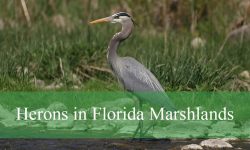Many types of Florida caterpillars are fuzzy, striped, and horned. These strange-looking caterpillars have a voracious appetite and can defoliate your crops or ornamental plants in the garden.
These caterpillars are larvae of moths and butterflies often seen in spring through summer in this Sunshine State. Here is a comprehensive guide for Florida caterpillars with their pictures and descriptions.
Are Florida Caterpillars Poisonous?
Florida caterpillars can be poisonous or non-poisonous. Furry Florida caterpillars belong to the stinging category and their spines contain venom that causes nasty rashes and pain.
The Puss caterpillar, saddleback caterpillar, hag caterpillar, and lo moth caterpillar are among the few venomous Florida caterpillars. Refrain from touching these caterpillars to avoid skin irritation and intense pain.
Other smooth-bodied counterparts are harmless and safe to handle. But some contain toxic substances that cause foul-tasting to potential predators. The venom can kill small birds when eaten in large quantities.
These plump caterpillars munch leaves of crops and trees to cause complete destruction. We recommend using chemical treatments to control their population and protect your ornamental trees. (Sources: Florida Caterpillar Identification Guide).
Different Types of Florida Caterpillars
Many gardeners find it challenging to identify some Florida caterpillar species. Here is a list of 39 different types of Florida caterpillars with their description and pictures:
Stinging Rose Caterpillar
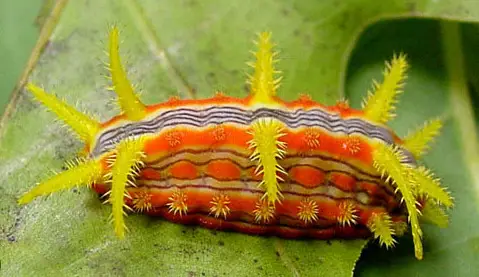
It is a colorful poisonous caterpillar that hails from along the East Coast from New York to Florida. The caterpillar has a yellow or orange-red body with thin bands of purple stripes on its back.
The jaggy horn-like spikes along the back and small clumps of spines along the sides are the distinctive features. Refrain from handling these grubs since the spines contain dangerous venom.
The poison can cause nasty skin irritation and redness on human skin. These stinging caterpillars can grow up to 2.5cm long and feed on leaves of hickories, oaks, poplars, dogwood, and rose bushes.
Scientific Name |
Parasa indetermina |
Host Plants |
Apple, dogwood, hickory, oak, poplars, and rose bushes |
Identification Features |
Yellow or red body with spike horns on the back and bands of purple stripes. |
Spiny Oak Slug Caterpillar

It is a colorful stinging caterpillar with jagged spikes around the body. The four pairs of upward-pointing spiked orange horns are distinctive features.
Other distinguishable features are the two orange bands along the back with circular green and white markings. The spikes contain venom that causes skin irritation.
These stinging caterpillars feed on the foliage of apple, ash, birch, basswood, oak, maple, poplar, hackberry, beech, birch, and many other deciduous trees or shrubs.
Scientific Name |
Euclea delphinii |
Host Plants |
Apple, Ash, birch, basswood, blueberry, hackberry, beech, and maple |
Identification Features |
Buck Moth Caterpillar
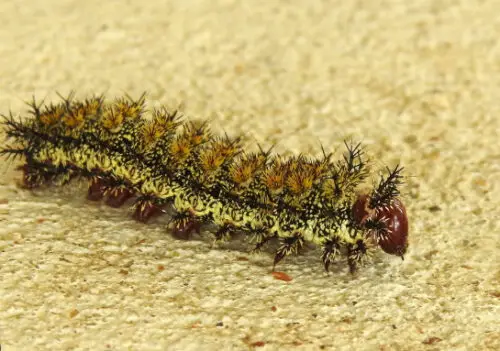
It is the largest Florida stinging caterpillar with tiny white dots on its black body. The jagged tufts of spines make the species look scary and dangerous.
The spines contain venom that causes skin irritation and redness if handled without protective gear. The round shiny black head is among the few distinctive features.
Refrain from touching buck moth caterpillars to avoid nasty stings. These crawling insects feed on the leaves of all oak tree species.
Scientific Name |
Hemileuca maia |
Host Plants |
Scrub oak, live oak, blackjack oak, and dwarf chestnut oak |
Identification Features |
Black caterpillar with several white tiny dots and a jaggy appearance |
Monkey Slug Caterpillars
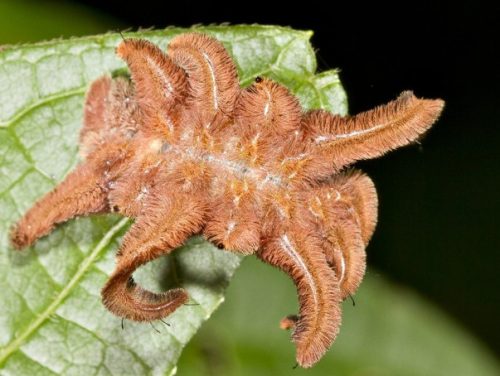
It is a brown fuzzy caterpillar with the strangest appearance in Florida. The flattened furry body and nine pairs of unusual projections along the sides are the distinctive features for easy identification.
The crawling creature might look like a dead hairy spider or an old leaf to hide from potential predators. The slug caterpillar can sting and the venom causes pain if handled without protective gear.
Scientific Name |
Phobetron pithecium |
Host Plants |
Apple, ash, birch, dogwood, hickory, oak, walnut, and willow |
Identification Features |
The tiny brown hairy caterpillar that resembles a squashed hairy spider or old leaf. |
Southern Flannel Caterpillar
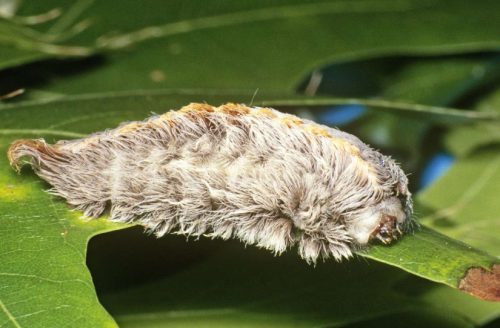
It is a type of furry caterpillar also called a puss caterpillar. The hidden poisonous spikes underneath the hairs can cause nasty stings.
These puss caterpillars are prevalent in the Southern States of the US. We recommend not touching these grubs to avoid severe pain from the poisonous spines.
The puss caterpillar’s name comes from the Persian cat due to its resemblance. Some people call these caterpillars asp larvae due to the painful sting similar to the snake bite.
Scientific Name |
Megalopyge opercularis |
Host Plants |
Oak and elm trees |
Identification Features |
Brown furry caterpillar with a broad rounded head and grows up to 2.5cm long. |
Io Moth Caterpillar
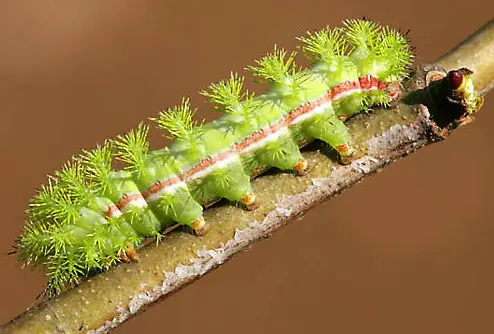
It is a green caterpillar that stings when handled without protective gear. The pale-green moth caterpillar has bands of bright green tufts of hair around its abdomen.
The red and white stripes along the abdomen are conspicuous for easy identification and classification. The stinging hairs on the four sets of prolegs give them a scary look.
The poison in the stinging spines can cause a burning sensation, nasty rashes, and pain if you touch them. The crawling insect can grow up to 6cm long.
Scientific Name |
Automeris io |
Host Plants |
Hackberry, willow, redbud, pears, and blackberry. |
Identification Features |
Green caterpillar with tufts of irritating spines and red and white stripes running lengthwise around the body. |
Saddleback Caterpillar
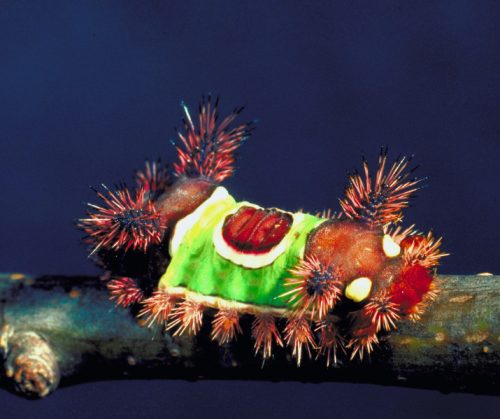
It is a slug-like caterpillar with large venomous spikes on its back. The saddle-like marking on the middle section is the prominent feature for easy identification.
The square green patch with a large brown circle makes this Florida caterpillar stand out from other stinging species. It can grow up to 2.5cm long.
The row of stinging spines along the abdomen and stinging horns at both ends give this caterpillar a menacing appearance.
Scientific Name |
Acharia stimulea |
Host Plants |
Apple, asters, blueberries, corn, citrus, dogwood, elms, and grapes. |
Identification Features |
Unusual green and brown saddle markings |
Milkweed Tiger Caterpillar
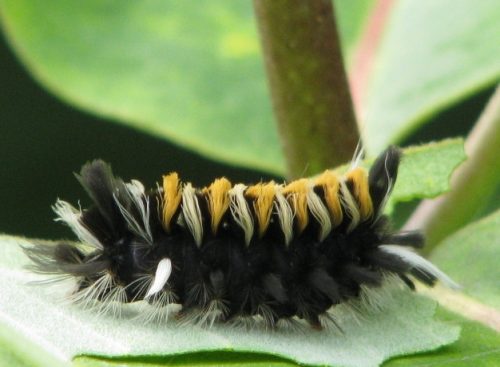
It is a small hairy caterpillar covered with colorful white, black, orange, and yellow tufts of hair. The hairy brown body and orangey spiny tufts on the back are the distinctive features.
The tan-colored tufts on its sides make this caterpillar a strange look. You can spot these crawling insects feeding on milkweeds and dogbane plants. Refrain from touching them since the hairs cause skin irritation.
Scientific Name |
Euchaetes egle |
Host Plants |
Milkweeds and dogbane |
Identification Features |
Clumps of orange, white, and light brown hairs around the body. |
Giant Leopard Caterpillar
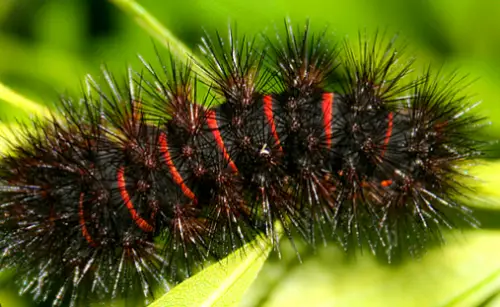
It is a black spiky caterpillar common in the southeastern United States. The conspicuous red bands between the sharp spines are the distinctive features.
The fuzzy appearance and spiked body can cause pain when the spikes break into the human skin. The crawling insect can grow up to 5cm long.
Scientific Name |
Hypercompe scribonia |
Host Plants |
Banana, cherry, cabbage, maples, sunflowers, violets, and willows. |
Identification Features |
Banded Woolly Bear Caterpillar

It is a black and brown furry caterpillar common in Florida. The broad rusty brown band around the black body is the distinctive feature.
The banded woolly bear caterpillar has an oblong appearance and fuzzy spines making it challenging for people to locate the head and tail.
These crawling creatures do not sting despite looking like stinging caterpillars. They are non-poisonous and roll into a ball-shaped when threatened.
Scientific Name |
Pyrrharctia isabella |
Host Plants |
Plantain, aster, dandelion, goldenrod, and some grasses. |
Identification Features |
Two black bands at both ends and a brown band around the middle section. |
American Dagger Moth Caterpillar
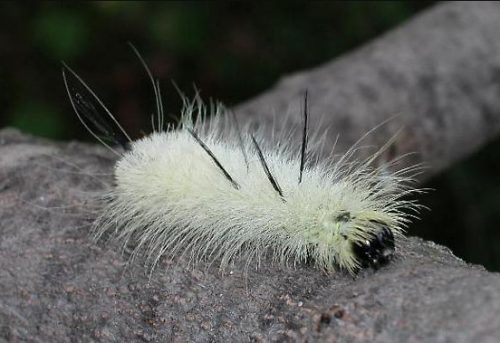
It is a moth caterpillar with pale yellow colors and long black pencil hair. The fuzzy yellow caterpillar also has a shiny black oval head for easy identification.
Other prominent features are the spiny hairs that cause skin irritation and nasty rashes when touching them. The furry caterpillars feed on alder, ash, elms, maple, and willow.
Scientific Name |
Acronicta Americana |
Host Plants |
Alder, ash, elm, maple, oak, willow, and other hardwood trees. |
Identification Features |
Yellow feathery spines with two pairs of long pencil hairs on its back. |
White-Marked Tussock Caterpillar
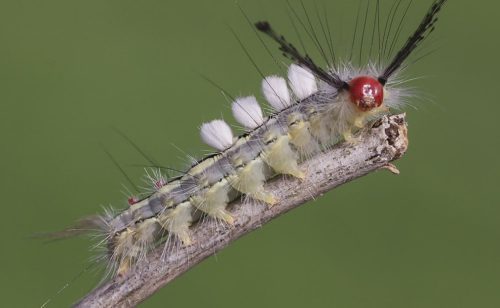
It is the hairiest caterpillar in Florida state. The tufts of spiny hairs around the body with two long black pencil hairs protruding from the front are the distinctive features.
The four tufts of white or yellow hairs on its back and two red dots on its tail are the additional features for easy identification. You will also notice white feathery spines sticking out from its sides.
Scientific Name |
Orgyia leucostigma |
Host Plants |
|
Identification Features |
Tobacco Hornworm Caterpillar
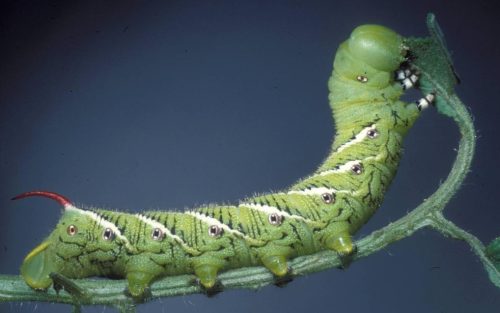
It is a green-horned caterpillar with a bright green body, eyespot markings, and white diagonal stripes along its sides. The crawling insect can grow up to 7cm long.
Another distinctive feature is the brown, green, or orange rear horn. These crawling creatures love feeding on the foliage of tobacco, tomato, and eggplant.
Tobacco and tomato hornworms have some close similarities. But the diagonal stripe along the sides of tobacco hornworm makes the difference.
Scientific Name |
Manduca sexta |
Host Plants |
Tobacco, tomato, pepper, eggplant, and other ornamental shrubs. |
Identification Features |
Pipevine Swallowtail Caterpillar
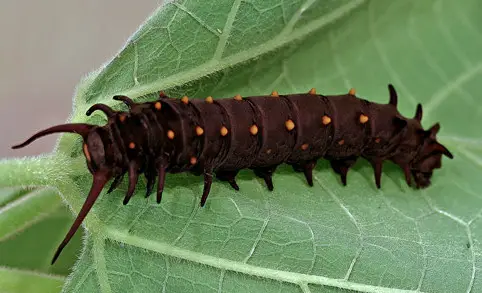
The dark-brown caterpillar has fleshy horns on its head, tail, and sides. The two rows of bright orange dots along its back are other distinctive features for easy identification.
The fine hairs around the body give the pipevine swallowtail caterpillar a velvety appearance. It can grow up to 5cm long due to its voracious appetite.
Scientific Name |
Battus philenor |
Host Plants |
Thistle flowers and ironweed plants |
Identification Features |
Black appearance with bright orange dots and fleshy horns. |
Imperial Moth Caterpillar
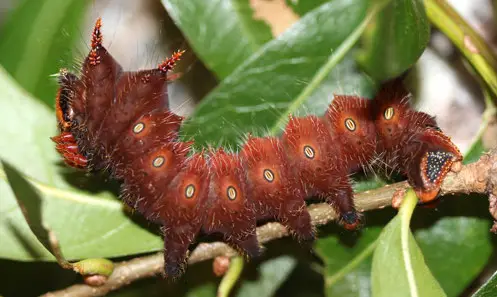
It is a horned moth caterpillar with long spiky horns on its head and a jaggy tail-like protrusion. The orange-brown caterpillar can grow up to 7.5-10cm long.
The moth larva keeps changing its colors as it goes through different growth stages. A mature caterpillar is darker and hairier.
The dark brown or dark green colors are indicators that the caterpillar is about to undergo pupation. They feed on the foliage of pine, maple, oak, and sweetgum.
Scientific Name |
Eacles imperialis |
Host Plants |
Pine, maple, oak, sweetgum, and sassafras |
Identification Features |
Hickory Horned Devil Caterpillar
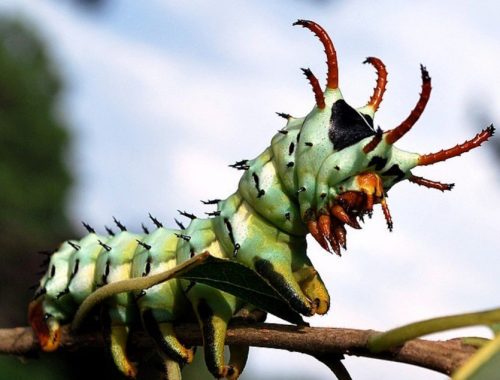
It is a strange-looking horned caterpillar in Florida that is entirely harmless compared to other species. These larva feed on the leaves of walnuts, hickories, and pecans.
The bluish-green body with curved spiny horns and black tips are the conspicuous features for easy recognition. It also has an orangey-red head and black spines on its body.
The menacing red horns are the reason for the hickory-horned devil’s name. The giant crawling insect turns into a regal moth after pupation.
Scientific Name |
Citheronia regalis |
Host Plants |
Walnut, hickory, pecan, and sweetgum. |
Identification Features |
Tomato Hornworm Caterpillar

It is a bright green caterpillar with rows of eyespots on the sides and V-shaped markings. The horned caterpillar has a pointed black projection on its tail looking like a horn.
The caterpillar loves feeding on the tomato foliage and is considered a garden pest. We recommend using chemical treatments to eliminate them from your tomato plants. It can grow up to 10cm long with a voracious appetite.
It can be challenging to spot tomato hornworms on tomato plants since the green body camouflage perfectly with the leaves.
Scientific Name |
Manduca quinquemaculata |
Host Plants |
Tomato plant leaves |
Identification Features |
Pale yellowish V-shaped markings and eyespots on the sides. |
White Admiral Caterpillar
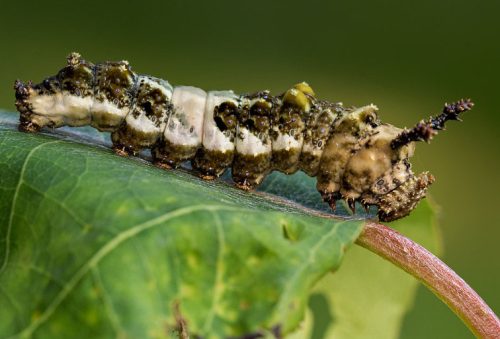
It is a Florida caterpillar that looks like bird poop on the branches. The camouflage helps these caterpillars protect themselves from potential predators.
The light green and brown body with uneven white blotches is the distinctive features for easy identification. The two long black horns on the head are additional traits.
These Florida caterpillars love feeding on the leaves of willow, aspen, poplar, and birch trees. They turn into vibrant iridescent blue and orange butterflies after pupation.
Scientific Name |
Limenitis arthemis |
Host Plants |
Willow, aspen, poplar, and birch |
Identification Features |
Brownish-olive caterpillar with uneven white blotches on its back and sides. |
Common Pine Sawfly Caterpillar
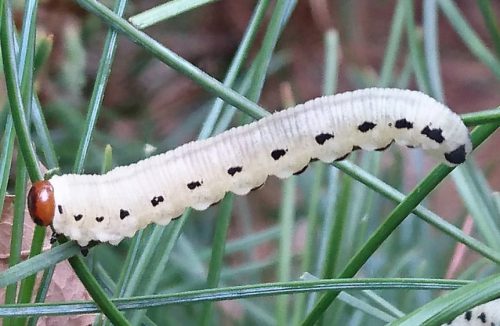
It is a light green caterpillar with black spots line on its sides and a single black line along the back. The caterpillar turns into a pine sawfly (Type of Wasp) after pupation.
The rusty red head turns into a pale yellow translucent when the grub enters its final growth stages with fake eyespots before pupation.
Scientific Name |
Diprion pini |
Host Plants |
Scottish pines |
Identification Features |
Pale green body and black markings along its back and sides. |
Eight-Spotted Forester Caterpillar

It is an orange caterpillar with black and white stripes around its body. Each segment has black tubercles that resemble small round dots.
The striped Florida caterpillar has visible feathery spines and four sets of prolegs and three sets of pointed forelegs.
Scientific Name |
Alypia octomaculata |
Host Plants |
Grape and Virginia creeper |
Identification Features |
Thick black-spotted orange stripes and tufts of thin spines. White and black stripes are also conspicuous. |
Queen Butterfly Caterpillar
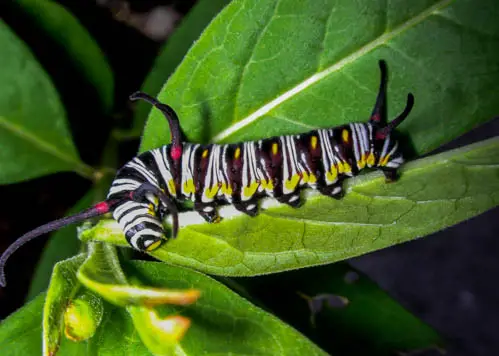
It is a butterfly caterpillar with black and white stripes around its body. The yellow dots on its back and sides are its distinctive features.
The stripy caterpillar has noticeable six large fleshy tentacles on the head and tail. The queen butterfly caterpillar can grow up to 5cm long.
Scientific Name |
Danaus gilippus) |
Host Plants |
Milkweed, frogfruit, and mistflower |
Identification Features |
Black and white striped caterpillar with yellow dots on its sides and back. |
Black Swallowtail Caterpillar
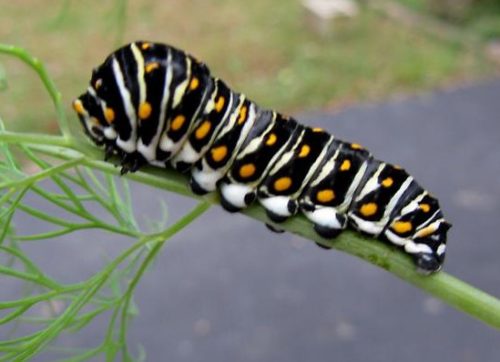
It is a large green caterpillar in Florida with black and yellow stripes around each segment. The grub does not have horns, spines, or spikes around its body.
The smooth-bodied caterpillar feeds on the foliage of milkweeds and parsley plants. The bright colors help ward off potential predators since they are seen as dangerous.
Scientific Name |
Papilio polyxenes |
Host Plants |
Carrots, dill, parsley, and fennel |
Identification Features |
Green body with a black and yellow-spotted bands around each segment |
Monarch Caterpillar
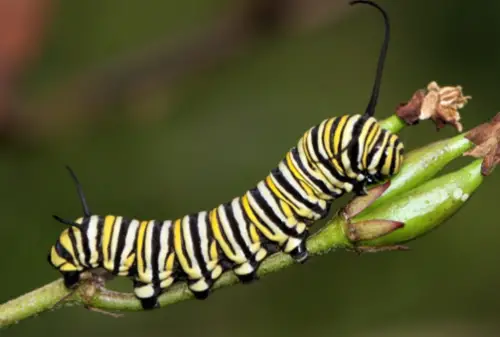
It is a striped and horned caterpillar in Florida with bright yellow, white, and black colors around its body. The colorful bands around each segment make this grub conspicuous.
Black long horns on the head and two shorter ones on the tail are distinctive features for easy recognition. They can grow up to 5cm long with a voracious appetite.
The white dots on the prolegs and black forelegs are noticeable. These caterpillars feed on milkweed plants and accumulate toxic substances in their bodies.
Scientific Name |
Danaus plexippus) |
Host Plants |
Milkweed plants |
Identification Features |
Azalea Caterpillars
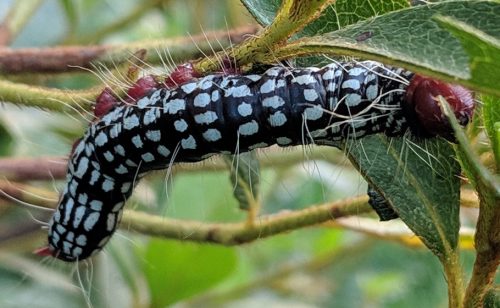
The black Florida caterpillar has bright green bands around its plump smooth body. The round orange head and tail section are conspicuous features.
The green, black, and orange markings are the identification traits. The voracious larvae can destroy the foliage of blueberry, apple, and oak trees.
Scientific Name |
Datana major |
Host Plants |
Blueberry, apple, and Oak |
Identification Features |
Black and Orange Florida Gulf Fritillary Caterpillar

It is a type of orange caterpillar with spiny spikes around its segments is the distinctive features for easy recognition.
The grayish-black stripes running lengthwise along its back are the additional features for classification and identification. These insects feed on the foliage of passion flowers.
Scientific Name |
Dione vanillae |
Host Plants |
Passion Flowers |
Identification Features |
Distinctive spines stuck out from the smooth orange body with blackish stripes. |
Spicebush Swallowtail Caterpillar

It is a strange-looking green caterpillar with large eye markings on its head. The Florida caterpillar changes from brown to green and then yellowish in the final growth stage.
The blue circular patterns on each segment and black circles surrounded by the yellow rings are the distinctive features.
Scientific Name |
Papilio Troilus |
Host Plants |
Sweet bay and spicebush |
Identification Features |
Black circles are surrounded by yellow rings creating eyespot markings on the head. |
Redhumped Caterpillar
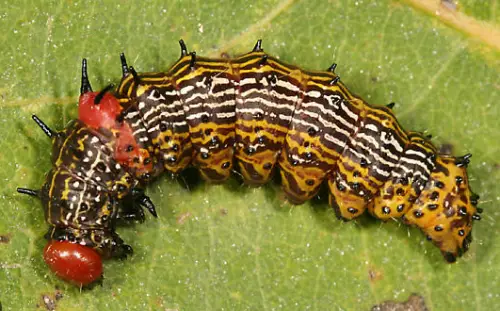
The red hump on the back is the reason behind the name of this Florida caterpillar. The yellow and white stripes are other distinctive features for easy identification.
The crawling insect also has soft horn-like growths, cherry-red round heads, and feathery spines. These grubs love feeding on the foliage of apple, apricot, birch, and cherry trees.
Scientific Name |
Schizura concinna |
Host Plants |
Almond, apple, apricot, birch, and cherry |
Identification Features |
Shiny black body covered in spiny spikes bands. |
Red Admiral Caterpillar
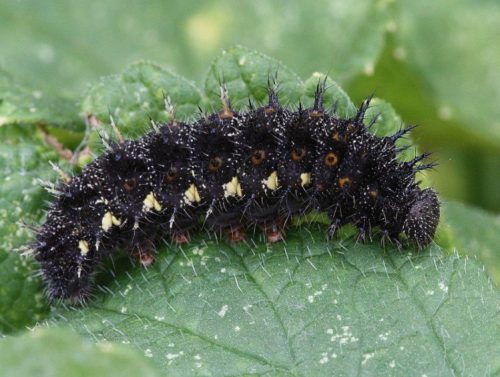
It is a spiky black caterpillar with fleshy spines and white tiny dots around its body. The Florida caterpillar turns grayish-brown with dark red or brown dots along the sides.
These caterpillars feed on stinging nettle plants and grow up to 2.5cm long. They turn into black and red butterflies after pupation.
Scientific Name |
Vanessa atalanta |
Host Plants |
Stinging nettles |
Identification Features |
Yellow body with black and white stripes. |
Polyphemus Moth Caterpillar

It is a silk-spinning caterpillar with a light green body and bright red dots around each segment. The plump caterpillar has noticeable spines emerging from the red tubercles.
The polyphemus moth caterpillar keeps changing color throughout its growth stages or instars. Juvenile caterpillars are bright yellow and gradually become green in each stage.
Scientific Name |
Antheraea polyphemus |
Host Plants |
Apple, ash, birch, elm, hazel, maple, rose, and dogwood. |
Identification Features |
Bright green translucent body with rows of red dots or silver spiny dots around its segments. |
Evergreen Bagworm

It is a strange-looking type of shiny black or dark brown caterpillar that is challenging to spot. The Florida caterpillar has protective bag-like structures made from tree foliage.
They live in these cocoon bags and infest rapidly to defoliate ornamental backyard trees like maple, oak, poplar, black locust, elm, etc.
Scientific Name |
Psychidae |
Host Plants |
Black locust, elm, maple, poplar, oak, and willow. |
Identification Features |
Bag-like structures made from tree foliage |
Yellow Florida Forester Moth Caterpillar
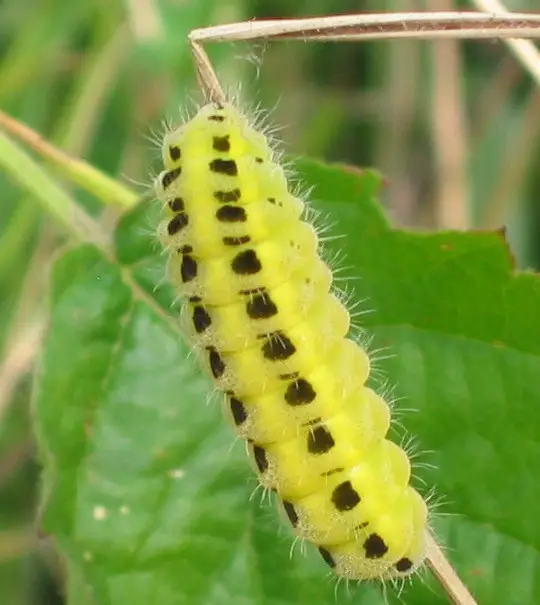
It is a moth caterpillar with bright yellow or yellowish-green body and rows of black dots on its back. These larvas have spiny tufts on their back and sides.
Yellow Florida forester moth caterpillars feed on herbaceous plants. They can grow up to 12.5cm long with a voracious appetite.
Scientific Name |
Zygaenidae |
Host Plants |
Carolina laurelcherry |
Identification Features |
Bright yellow caterpillar with black markings along its sides and back. |
Florida Tiger Swallowtail Caterpillar

It is a dark green caterpillar with a smooth body and distinctive eye-like markings on either side of the head. It is toxic to birds and other small predators.
The caterpillar has a defensive organ on its head that appears when threatened. It looks like a forked snake tongue to scare potential predators.
Scientific Name |
Papilio glaucus |
Host Plants |
Black cherry, Carolina ash, sweet bay, and green ash trees. |
Identification Features |
Unusual eye-like markings on either side of the head with a dark green abdomen. |
Cecropia Moth Caterpillar
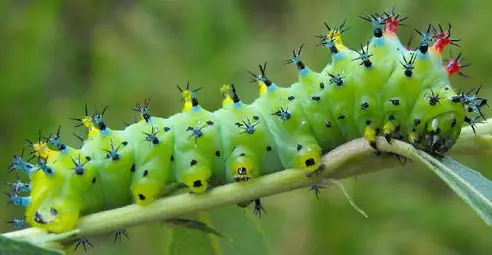
The Florida moth caterpillar has large ridged segments with rows of blue and orange tubercles. The black spikes and lime-green body bring a stunning contrasting look.
The menacing green caterpillars turn into beautiful brown moths often seen in April and throughout June. These larvas feed on ash, birch, alder, elm, and maple foliage.
Scientific Name |
Hyalophora cecropia |
Host Plants |
Ash, birch, box elder, alder, elm, maple, and poplar |
Identification Features |
Visible segments with rows of blue and yellow fleshy bumps, black spikes, and numerous orange tubercles. |
Cabbage Looper Caterpillars
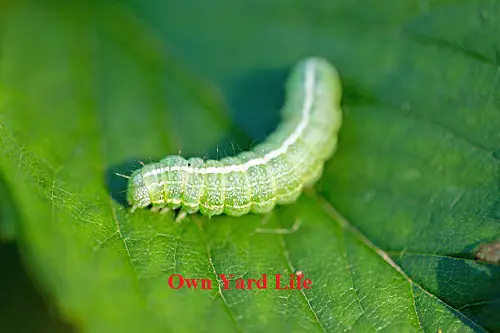
It is a green caterpillar common in Florida State and often seen in the spring to summer. These voracious creatures have a looping action while in motion.
Cabbage looper caterpillars have a voracious appetite and can eat about three times a day compared to their body weights. They can grow up to 4cm long.
Scientific Name |
Trichoplusia ni |
Host Plants |
Tomato, soybean, pepper, and cabbage |
Identification Features |
Lime-green or yellow-green body with looping action when in motion. |
Luna Moth Caterpillar
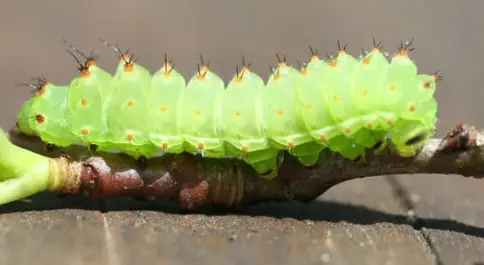
The moth caterpillar has a lime-green body with red dots at the back and tufts of small spines. It has the trait of raising the front part of its body while in motion.
Luna moth caterpillars feed on the leaves of birch, walnut, hickory, American sweet gum, and maple trees. They can grow up to 9cm long due to their voracious appetite.
Scientific Name |
Actias luna |
Host Plants |
Birch, hickory, American sweet gum, and walnut. |
Identification Features |
Brown head, bright red dots line running lengthwise, and three pairs of brown forelegs |
Forest Tent Caterpillars
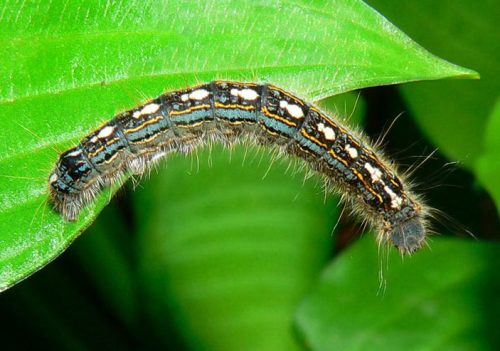
The forest tent caterpillar has a dark body with yellow lines, lateral blue bands, and white patches. The Southern US caterpillar has noticeable feathery spines along its sides.
The tent worm is often seen in spring and summer in Florida. These fuzzy Florida caterpillars feed on the foliage of willow, oak, birch, elm, and maple trees.
Scientific Name |
Malacosoma disstria |
Host Plants |
Willow, oak, elm, birch, and maple tree leaves. |
Identification Features |
Blackish-brown worm-like caterpillar with blue, yellow, and black lines running lengthwise on its back. |
Zebra Longwing Caterpillar
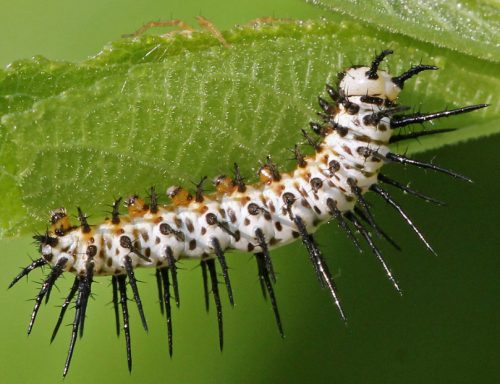
It is a pale-gray caterpillar with long black fleshy spikes common in Florida and other Southern United States. The pointed black spikes are covered in fine spines.
These spiky caterpillars feed on the foliage of passionflower vines that provide toxic substances in their bodies. The venom causes foul-tasting to predators.
Scientific Name |
Heliconius charithonia |
Host Plants |
Passionflower vines |
Identification Features |
Long-Tailed Skipper Caterpillar
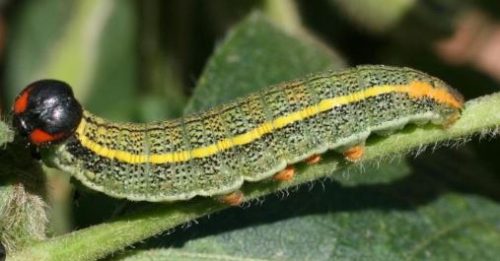
It is a large green slug-like caterpillar with rings of yellow spots around the segments and a lateral greenish-yellow line running lengthwise along its back.
The long-tailed skipper caterpillar is also called the bean leafroller due to its black globular head and orange patterns on its tail.
Mature caterpillars turn pale green and later develop pinkish patterns. These grubs feed on the foliage of legumes from spring through summer.
Scientific Name |
Urbanus proteus |
Host Plants |
Beans, peas, hog peanuts, and wisteria plants. |
Identification Features |
Ball-like head, yellow markings, and orange prolegs. |
Cloudless Sulphur Caterpillar

It is a light green Florida caterpillar with black raised dots producing tiny spines. The soft yellowish spines also cover the prolegs and abdomen.
The pale-yellow stripe running along its sides is an additional distinctive feature among these green Florida caterpillars.
Scientific Name |
Phoebis sennae |
Host Plants |
Maryland wild-sensitive plants |
Identification Features |
Green body with bluish-black dots and light yellowish short spines. The yellow lateral band along its sides. |
People Who Read This Also Read:

